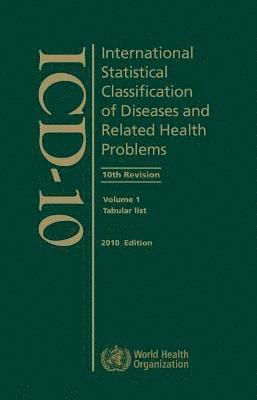
Fler böcker inom
- Format
- Inbunden (Hardback)
- Språk
- Engelska
- Antal sidor
- 2200
- Utgivningsdatum
- 2012-01-16
- Upplaga
- 2010 ed
- Förlag
- WORLD HEALTH ORGANIZATION
- Illustrationer
- 3v. (various pagings) tables
- Dimensioner
- 241 x 152 x 120 mm
- Vikt
- Antal komponenter
- 1
- Komponenter
- 3 Paperbacks
- ISBN
- 9789241548342
- 3828 g
ICD-10 International Statistical Classification of Diseases and Related Health Problems (3 Volumes) Version 4
Package of Volume 1 2 and 3 (Not Sold Separately)
Inbunden,
Engelska, 2012-01-16
Slutsåld
Kundrecensioner
Har du läst boken?
Sätt ditt betyg »
Fler böcker av World Health Organization
-
Multiaxial Classification of Child and Adolescent Psychiatric Disorders
World Health Organisation, World Health Organization, Who, Michael Rutter
-
Pocket Guide to the ICD-10 Classification of Mental and Behavioral Disorders
J E Cooper, World Health Organization
-
ICD-10 International Statistical Classification of Diseases and Related Health Problems
World Health Organization
-
Clinical Description and Diagnostic Guidelines
World Health Organization, World Health Organization
